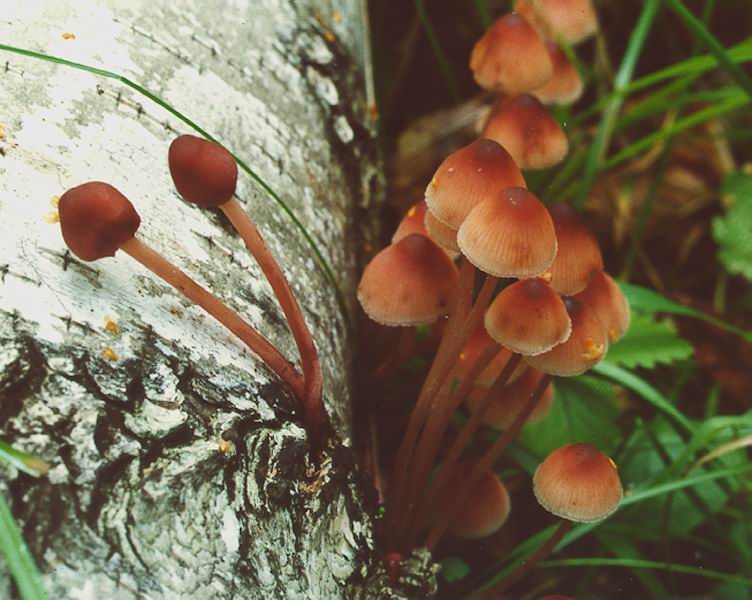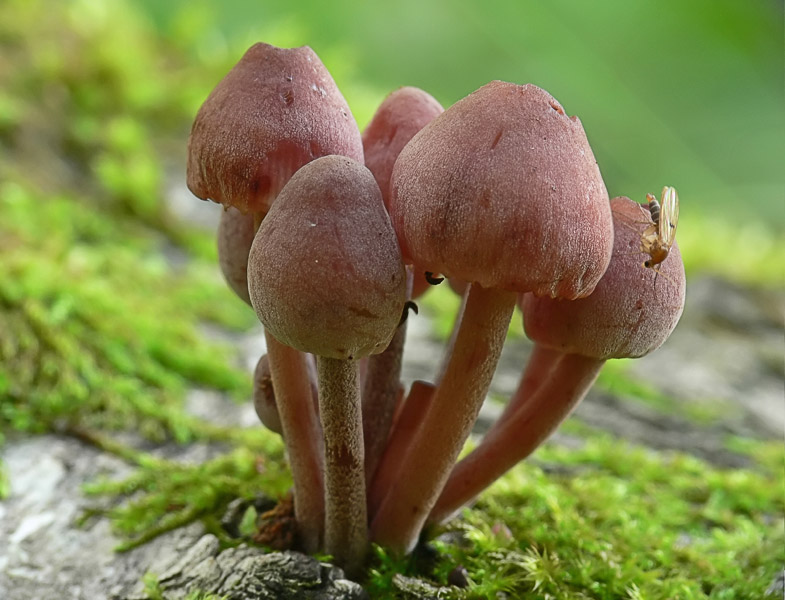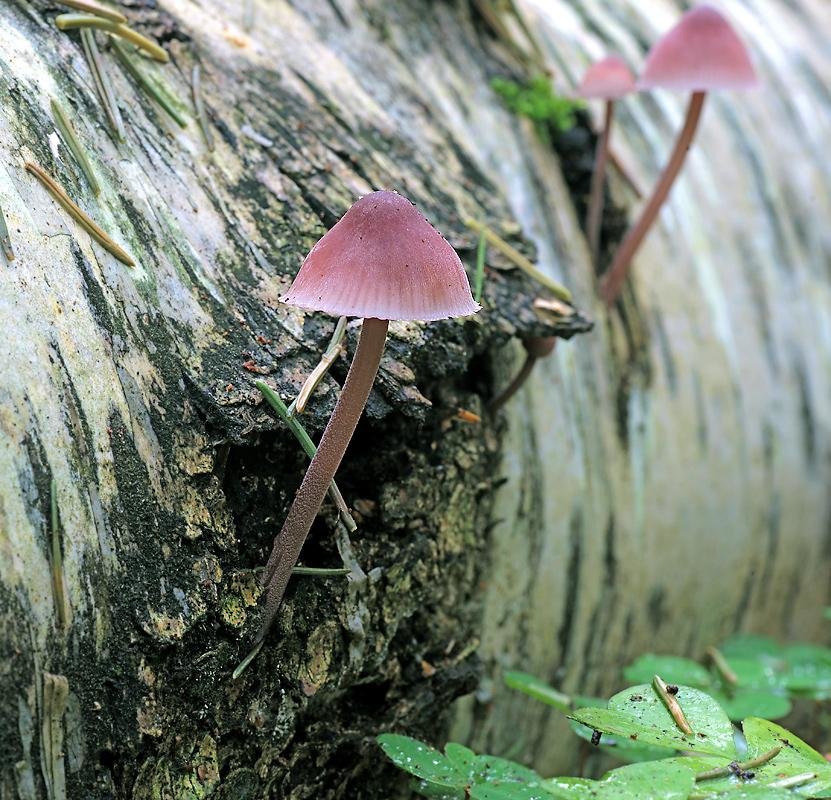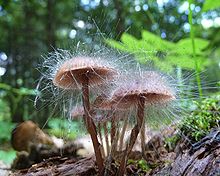Mycena blood-legged

Blood-leg mycena
If you go to the forest not only for mushrooms, but also for blackberries, you may not notice the characteristic feature of this mushroom: it oozes with purple juice, staining your fingers just like blackberry juice.
Mycena blood-leg is one of the few easily identifiable types of mycena: for the release of colored sap. One has only to squeeze the pulp, especially at the base of the leg, or break the leg
There are other types of "bleeding" mycenes, for example, Mycena sanguinolenta, in this case, you should pay attention to the ecology, these mycenae grow in different forests
Description
Cap: 1-4 centimeters in diameter, oval-bell-shaped when young, becoming wide-conical, wide-bell-shaped or nearly spread with age. The edge is often with a tiny sterile portion that becomes torn with age. The skin of the cap in youth is dry and dusty with a fine powder, becomes bald and sticky with age. The texture is sometimes finely lined or grooved. The color is dark brownish-red to reddish-brown in the center, lighter towards the edge, often fades with age to a grayish-pink or almost whitish color.
Plates: narrowly accreted, sparse, wide. Whitish, becoming grayish, pinkish, pinkish-gray to purple; often turns reddish brown; the edges are colored like the edge of the cap.
Leg: long, thin, 4-8 centimeters long and about 1-2 (up to 4) millimeters thick. Hollow. Smooth or with pale red hairs located more densely towards the base of the peduncle. In the color of the cap and darker towards the base: brownish red to reddish brown or almost purple. Gives off a purplish red "bloody" sap when pressed or at a fracture.
Flesh: thin, brittle, pale or the color of the cap. The flesh of the cap, like the leg, secretes "bloody" juice when damaged.
Smell: does not differ. Taste: indistinguishable or slightly bitter.
Spore powder: White. Spores: Ellipsoidal, amyloid, 7.5 - 9.0 x 4.0 - 5.5 μm.
Ecology
Saprophyte on deciduous wood (it is extremely rare to mention the appearance on coniferous wood). Usually on well-decomposed logs without bark. Grows in dense clusters, but can grow singly or scattered. Causes white wood rot.
Edibility
The mushroom in different sources is ranked either as inedible or as having no nutritional value. Some sources indicate it as edible (conditionally edible), but completely tasteless. No data on toxicity.
Season and distribution
From spring to late autumn (and in winter in warm climates). It is widely distributed in the countries of Eastern and Western Europe, Central Asia, and North America.
Similar species
Bloody mycena (Mycena sanguinolenta) is much smaller in size, produces a watery red sap and usually grows on the ground in coniferous forests. Mycena rosea (Mycena rosea) does not emit "bloody" juice. Several sources mention Mycena haematopus var. marginata, there is no detailed information about it yet.
Additional Information
Mycenae blood-legged is often affected by the fungus-parasite Spinellus fusiger.
Mushroom photo Mycena blood-legged from questions in recognition:
Edible mushrooms, berries, herbs
Mycena pure (Mycena pura, Pers., P. Kumm)
Pure mitcena can be found from the second decade of May to the last decade of September in coniferous and mixed forests. It prefers to settle in groups (it can very rarely grow singly) on the forest floor. In summer, in very hot weather, it practically does not grow, but after the temperature drops to 16-18 degrees, it appears quite massively.
A small cap, 2-4 cm in diameter, is first bell-shaped with a lowered edge, then slightly lumpy, prostrate with a ribbed (often raised) edge.The surface is smooth, gray-pink, pink-lilac in color with a purple or yellowish tint in the middle and lighter edges.
The plates are medium-frequency, wide, thick, lilac-pink with a purple tint.
The leg is smooth, cylindrical, up to 5 cm long and 0.3-0.5 cm in diameter. The leg is hollow inside. Coloring the same color as the cap or slightly lighter.
The pulp is thin, soft, light with a lilac tint, has an unpleasant aroma, reminiscent of a moldy odor.
Mycena is a pure inedible mushroom, in some foreign sources it is considered a weakly poisonous mushroom that can cause mild poisoning and small hallucinations.
It can be confused with the edible lilac varnish, from which it differs in an unpleasant smell and shape of the cap. In appearance, it is also similar to the poisonous mycene pink, containing the poison muscarine.
Photos and pictures of mycena pure (Mycena pura, Pers., P. Kumm)
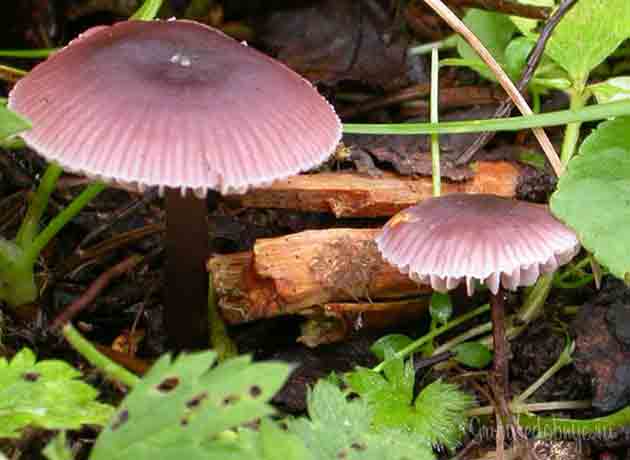
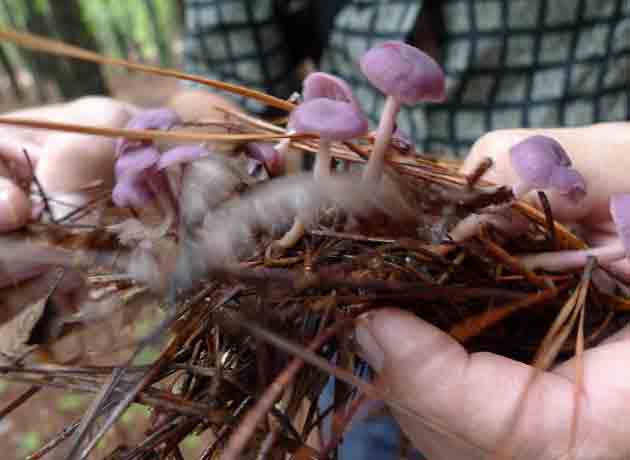
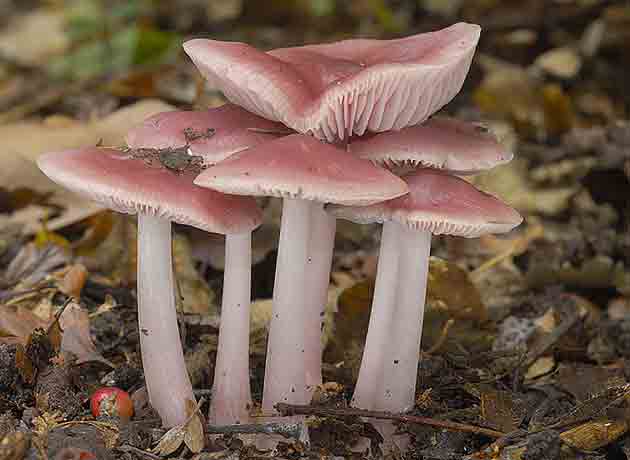
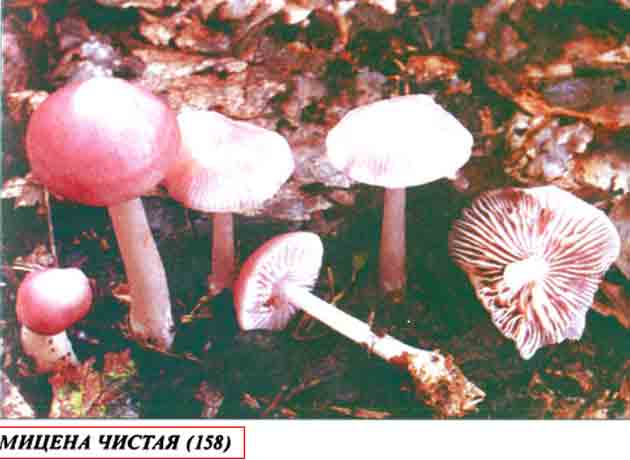
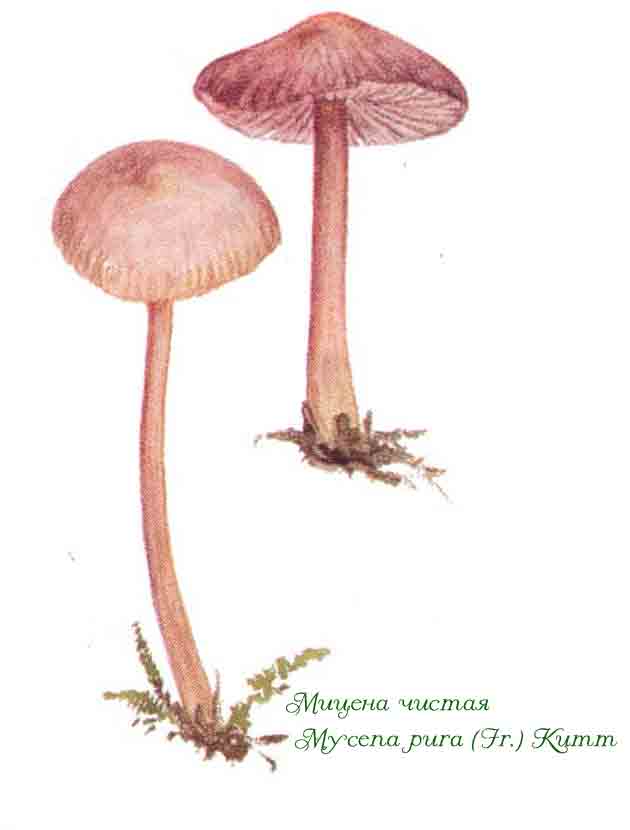
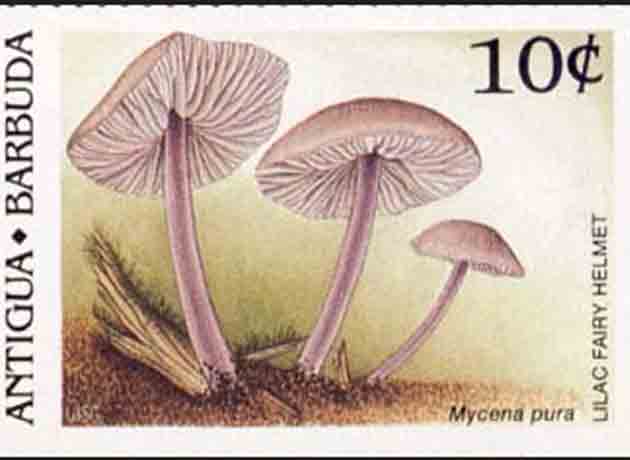
What it looks like, where it grows, the characteristic features of the pure mycena are shown in this video
Description of the inedible mushroom
Mycenae pure belongs to the genus Mycene of the Mycene family, the Agaric order. The Latin name of the species is Mycena pura, the synonyms of which are Agaricus purus and Gymnopus purus.
The mycena has the shape of a hemispherical cap; as it grows, it becomes conical, later extended. In older mushrooms, the edges of the cap may rise. There is some mucus on the surface, the color is gray-brown, pale, darker in the center than at the edges. The diameter of the mushroom reaches 4 cm, along the edges of the cap has translucent grooves. The color can be from white to pinkish or lilac.
The hymenophore of the fungus (the lower part of the fruiting body) is a plate that can be narrow or wide, but necessarily adherent. They are sparse, usually smooth, less often slightly wrinkled, have veins, and there are bridges at the base of the cap. The hymenophore is lighter towards the edge of the cap. Spores are white.
The flesh on the cut is gray, thin, slightly watery, has an unpleasant taste and smell. The leg is hollow and fragile, reaching 9 cm in length, and only 0.3 cm thick. Smooth, with a slight bloom on top, as well as long whitish hairs. In the event of a fracture, a lot of fluid is released from the leg.
Despite its toxicity, pure mycena is listed in the Red Book of such countries:
- France;
- Norway;
- Latvia;
- Denmark.
In Russia, the pure mycena is not listed in the Red Book for the reason that it contains a very small amount of the substance muscarin, which can cause hallucinations. For a long time, the mushroom was considered edible. After frequent fixation of digestive disorders, the species was transferred to the category of poisonous.
Poisonousness of mycene pure
In the tissues of the pure mycene, there is a small amount of poison, which provokes visual and auditory hallucinations. Visual perception changes, objects begin to move, colors intensify, imagination is played out and the perception of reality changes. Speech changes, music is heard in a new way, sensitivity to sounds increases.
Pure mycene contains muscarine, which causes contraction of the muscles of the stomach and other smooth muscle organs - the bladder, spleen and uterus. The pupils are severely constricted. Due to the effects of muscarine, the secretion of bile and pancreatic juice increases. In addition, increased salivation appears.
In case of poisoning with pure mycena, nausea, vomiting, diarrhea of pain, or completely different symptoms may occur: dizziness, drunkenness, excessive agitation, the need for active movement. After that, trembling passes throughout the body, convulsions occur, the pulse quickens, breathing is disturbed, and the body temperature drops dramatically. With such symptoms, death can occur in a couple of days. If there is a recovery, then the body recovers extremely slowly, and the blood clots very badly.
Help with pure mycena poisoning
First of all, when poisoning with mushrooms, the stomach and intestines are cleared, this is done with the help of emetics and enemas. Castor oil is drunk in large doses.Atropine, which is an antidote to muscarine, is injected subcutaneously.
LAT Mycena pura Inedible Synonyms: Agaricus purus, Gymnopus purus
Specifications:
| Group: | Lamellar |
|---|---|
| Plates: | White, grayish |
| Colour: | Brownish, with a grayish tint |
| Info: | Smells like radish |
Systematics:
| Department: | Basidiomycota (Basidiomycetes) |
|---|---|
| Subdivision: | Agaricomycotina (Agaricomycetes) |
| Class: | Agaricomycetes (Agaricomycetes) |
| Subclass: | Agaricomycetidae |
| Order: | Agaricales (Agaric or Lamellar) |
| Family: | Mycenaceae (Mycene) |
| Genus: | Mycena |
| View: | Mycena pura (Mycena pure) |
Pure mycena is inedible, moreover, it is poisonous and has hallucinogenic properties due to the muscarine contained in it. Psychoactivity is poorly expressed.



